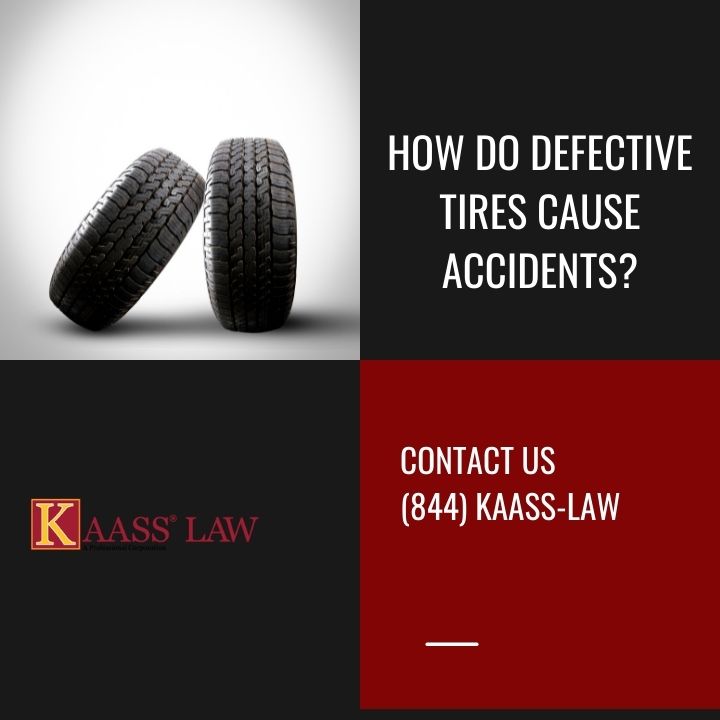What are the Most Common Causes of Tire Defect Accidents?
- separation of the treads
- a tire blowout
- problems with air pressure,
- old, brittle, or cracked rubber, and
- faulty construction of the sidewalls
Tread separation is a particularly common cause of a collision. The tread is the grooved section of the tire that makes contact with the road. When low-quality materials are used in the adhesion that connects the tread to the tire’s steel belt, the tread can come loose. If the de-treading occurs on the road, the driver may lose control and cause a crash. If the tread separates from the tire at high speeds, the car may rollover, resulting in catastrophic injuries to the vehicle owner.
A tire blowout is a well-known cause of car accidents. In these cases, it appears that the tire explodes or pops. However, a tire blowout can be caused by a variety of factors, including:
- A hole in the tire’s air tubes,
- Underinflated tires cause wear on the sides of the tire that are too thin to handle it, causing it to rupture.
- Excessive tread wear,
- Excessive weight, which can also cause tire side wear,
- old tires that should have been replaced, and
- Potholes and other hazardous road conditions
How Do Victims Establish Negligence in California?
Victims injured in a car accident caused by a faulty tire can file a personal injury or products liability claim. If the accident killed the victim, the victim’s loved ones can file a wrongful death claim on his or her behalf. Many victims seek compensation under California’s personal injury laws. These claims require proof that someone else’s negligence caused the tire problem and subsequent car accident. In order to establish negligence in California, victims must demonstrate:
- The defendant had a duty of care to the victim.
- The defendant violated his or her duty of care.
- The breach played a significant role in the victim’s injuries.
If the tire was defective, the person or party who designed, manufactured, or sold it could be held liable under California’s product liability laws. They may face strict liability for:
- flaws in design
- manufacturing flaws
- defect notification
In these cases, the victim or plaintiff is not required to demonstrate that the party responsible for the defect acted negligently. It is sufficient that the defendant was responsible for the defect.
Design Defect
Design flaws are issues with the tire’s design. A design flaw occurs when the material that holds the tread to the tire is designed to be too weak. While design flaws are uncommon, they can affect an entire tire line. This could apply to hundreds of thousands of tires on the road.
In California, there are two tests that can be used to determine whether a design is defective:
- the test of consumer expectations
- the risk-benefit analysis
Meanwhile, the risk-benefit test involves a shifting burden of proof. To begin, plaintiffs must demonstrate:
- The defendant created the tire.
- The plaintiff was injured.
- The design of the tire played a significant role in the plaintiff’s injuries
The defendant must then demonstrate that the benefits of the tire’s design outweighed the risks. Among the factors are:
- the gravity of the potential harm caused by using the tire
- the likelihood of this harm occurring
- the feasibility of a safer alternative design at the time the tire was manufactured
- the cost of a different design
- the disadvantages of a different design
Manufacturing Defect
Manufacturing flaws are issues that arise during the tire’s production. They can be widespread, such as a plant’s decision to use inferior rubber during the manufacturing process, or specific to a tire, such as if a worker punctures an air tube while assembling it. In California, proving a manufacturing defect necessitates evidence of:
- The tire was manufactured, distributed, or sold by the defendant.
- When it left the defendant’s possession, the tire had a manufacturing flaw.
- The victim was injured.
- The defect in the tire played a significant role in the victim’s injury.
Motorists pursuing a strict liability case against a tire manufacturer should seriously consider forming an attorney-client relationship with a legal team of trial lawyers from a reputable law firm with a track record of obtaining favorable verdicts in accident claims. People who have suffered serious injuries in vehicle accidents as a result of a defective product can recover the compensation they require with the help of a personal injury lawyer.
Defective Warnings
Problems with how the tire is marketed are examples of warning defects. As an example, suppose a tire company claims that their brand of tire never needs to be rotated, and the lack of rotation causes uneven wear, resulting in an accident.
In order to establish that the tire had a warning defect in California, plaintiffs must show:
- The defendant was the tire’s manufacturer, distributor, or retailer.
- At the time of the tire’s manufacture or sale, the industry’s generally accepted knowledge revealed potential risks that were known or knowable.
- When the tire was used as intended or misused in a reasonably foreseeable way, those potential risks posed a significant danger.
- Ordinary consumers would not have been aware of the potential dangers.
- The defendant failed to adequately warn customers about these dangers.
- The plaintiff suffered harm.
- The absence of warnings played a significant role in causing the plaintiff’s harm.
Contact a Los Angeles Attorney
If you have experienced a defective product, give our office a call so we can discuss further on your case. Feel free to reach us at 310.943.1171.


Pingback:How Can Rollover Accidents Be Life-Threatening? - KAASS LAW